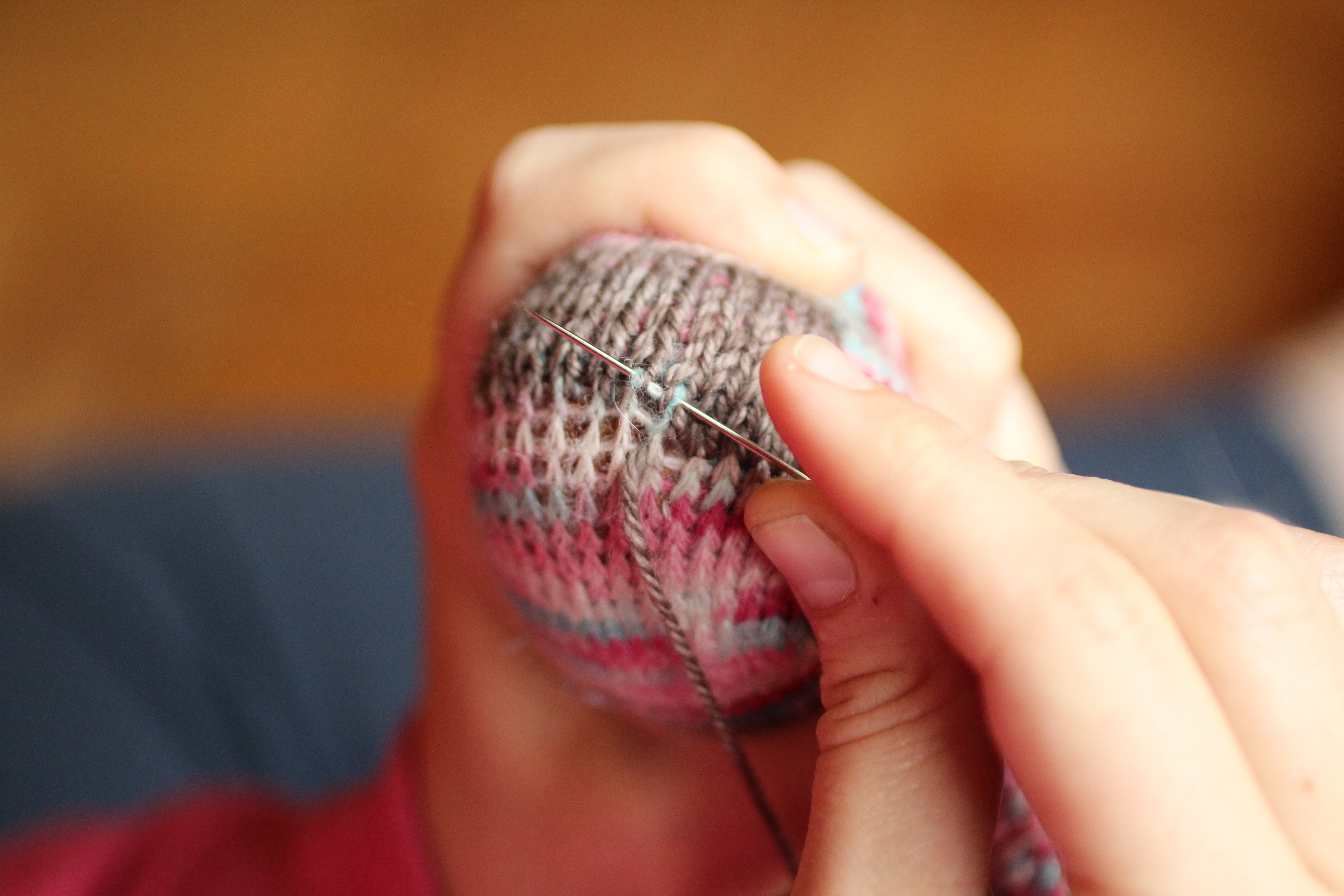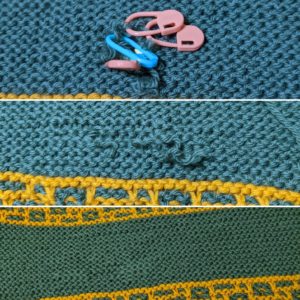 It seems like the entire fall has been consumed with white sweaters: I had three repairs of Irish Knit sweaters in a row, which is one of the more boring things to write about. But my latest repair is a lovely green and gold shawl that I thought was paticularly interesting, and I thought I’d share it here in addition to writing about it on Instagram.
It seems like the entire fall has been consumed with white sweaters: I had three repairs of Irish Knit sweaters in a row, which is one of the more boring things to write about. But my latest repair is a lovely green and gold shawl that I thought was paticularly interesting, and I thought I’d share it here in addition to writing about it on Instagram.
This piece had five rows of stitches ripped into a hole: it had caught on something (dryer? door?) and gotten the hole. Being that it was in the colors of the client’s daugther’s team, it needed to be repaired.
This is one of the repairs that is just a joy to work on: the client, D, had sent the piece to me with the loose stitches still on locking stitch markers. She had taken my Darn It class with me at Rhinebeck, so she knew the drill: catch the stitches so they don’t drop and make the hole bigger. It meant I could dive right into the repair without having to fish around ladering the stitches back into place. (Which, have I mentioned lately that my Darn It class is both on Interweave and Craftsy?)
It was time to get to work.
Garter stitch is one of the prime times where I like to use a single long-ish strand of the repair yarn if I can. While many of the orional techniques of doing swiss darning call for a new strand of yarn on each row, I find that leaves a lot of ends to weave in, and can make the fabric very dense in those areas. Trying to keep the ends pretty short, I only opened up the hole a little, working duplicate stitch along the sides and then knitting across the hole before moving up to the next row. I did that for the first few rows, and then grafted the last row together.
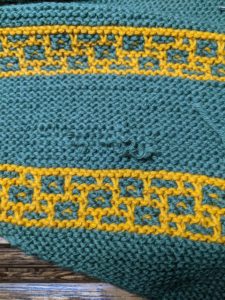 Then it was time to weave in the ends.
Then it was time to weave in the ends.
I feel like often most of the attention I give to pieces is the process of repairing the hole, which is important! But, I find it equally as satisfying to weave in the ends – that’s when a hole is truly repaired. I feel like sometimes garter stitch can be a little tricky to weave in all the ends, so I chose to split the yarn into smaller strands to try and hide the ends a little better and keep the fabric from getting too thick where the old and new yarn overlapped.
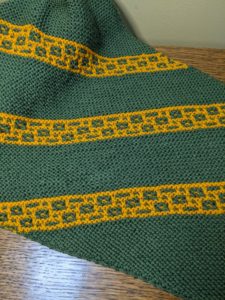
Finally, it was time to fuss with the tension to make sure that everything was laying flat and even.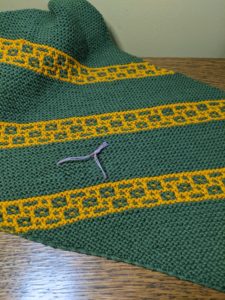
A blast of steam to “convince” the newly woven in ends that they should stay where I put them, and this piece was ready to send in the mail. A satisfying way to leave things!

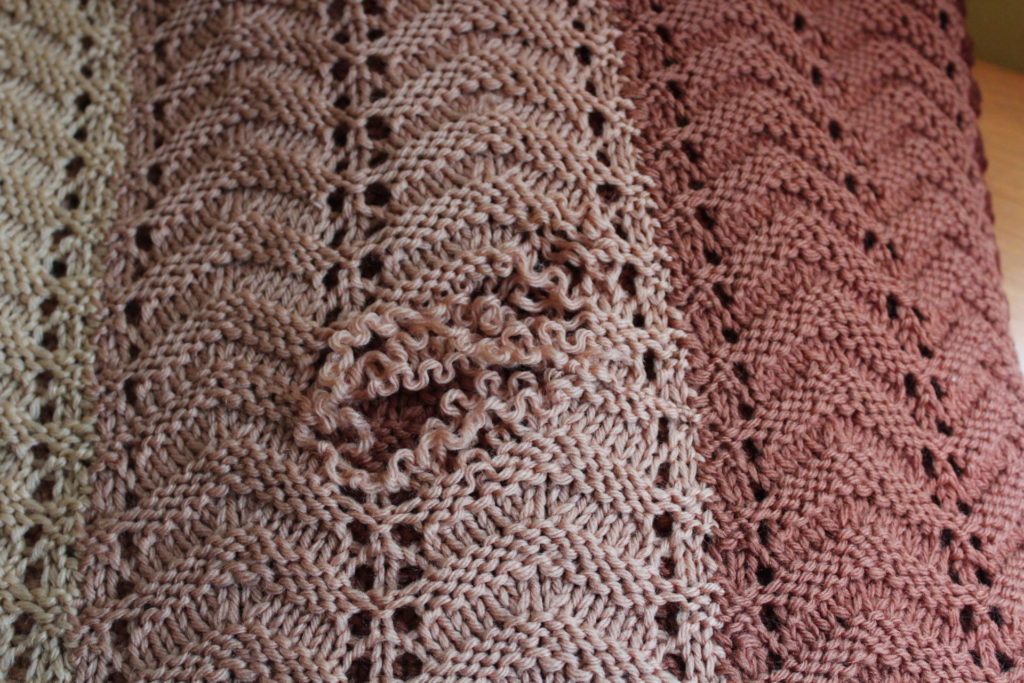
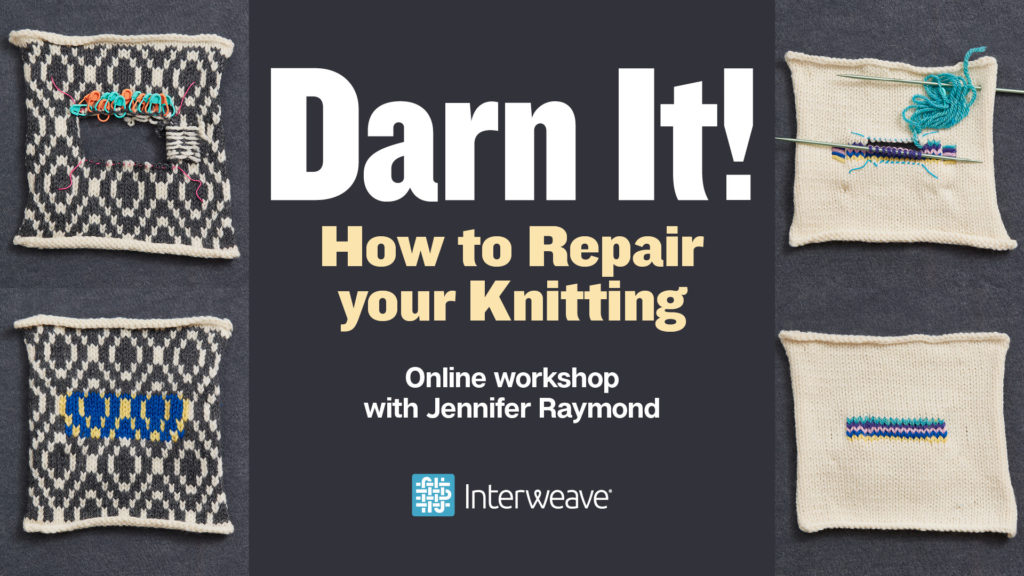
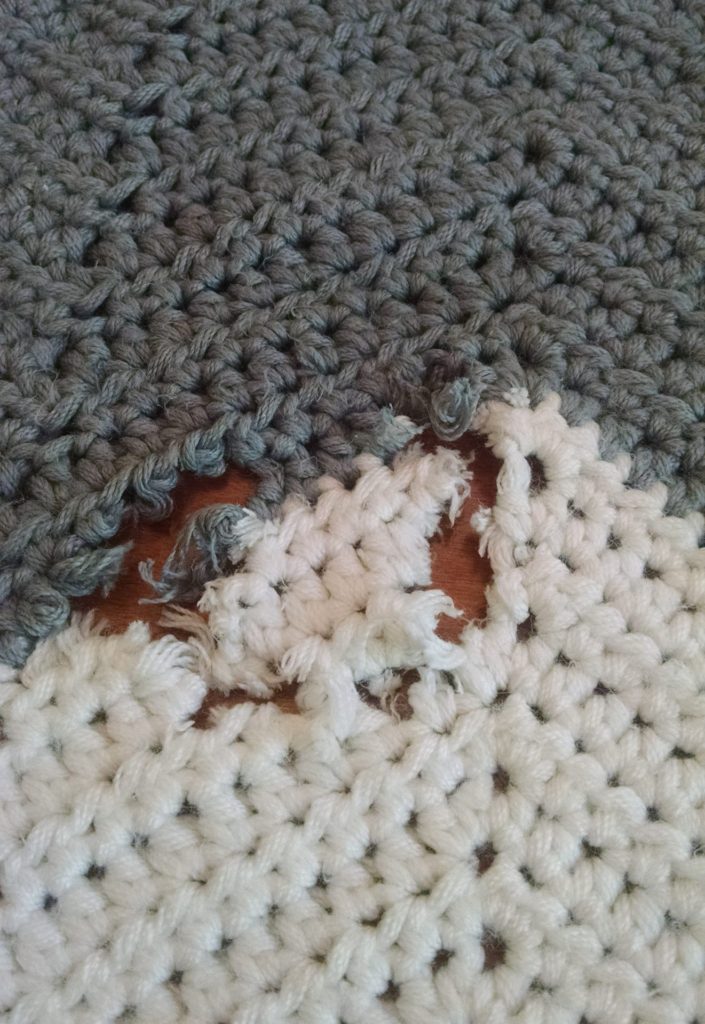
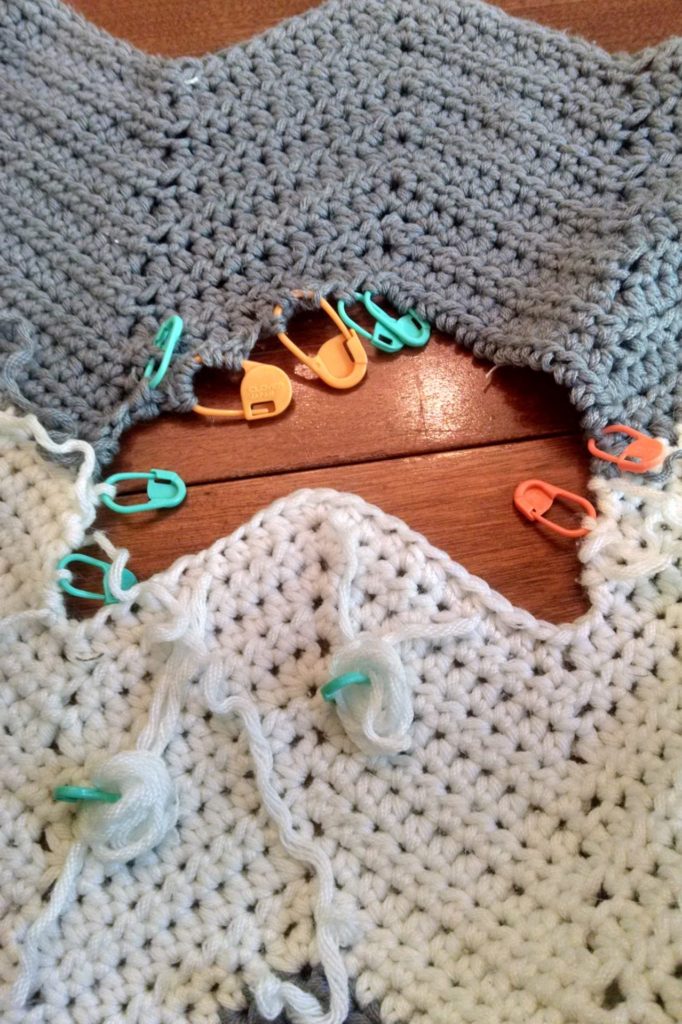
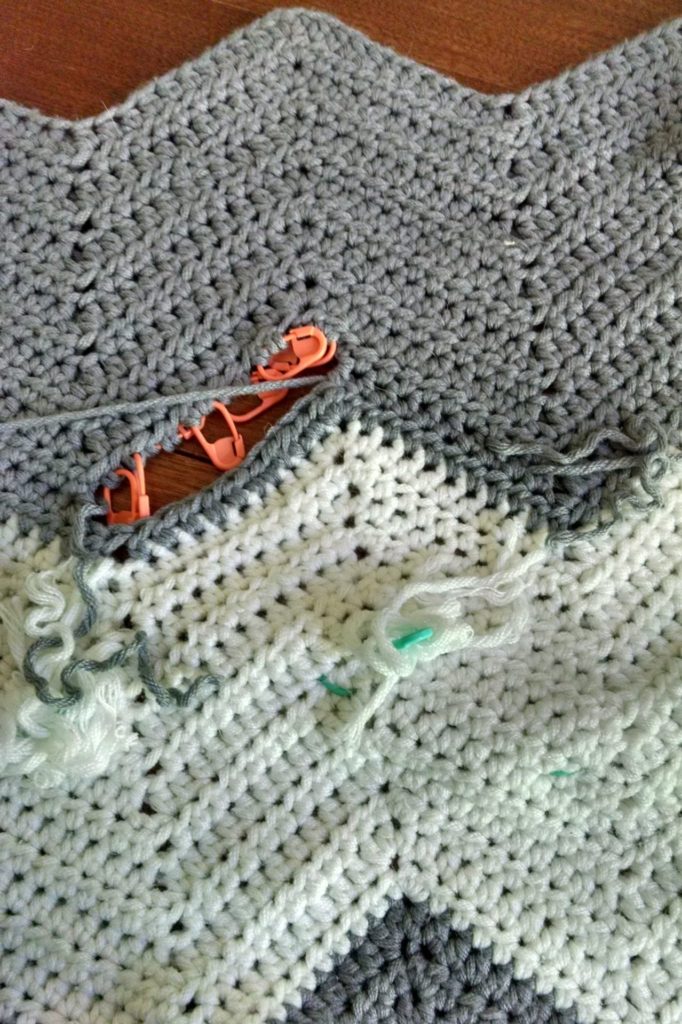
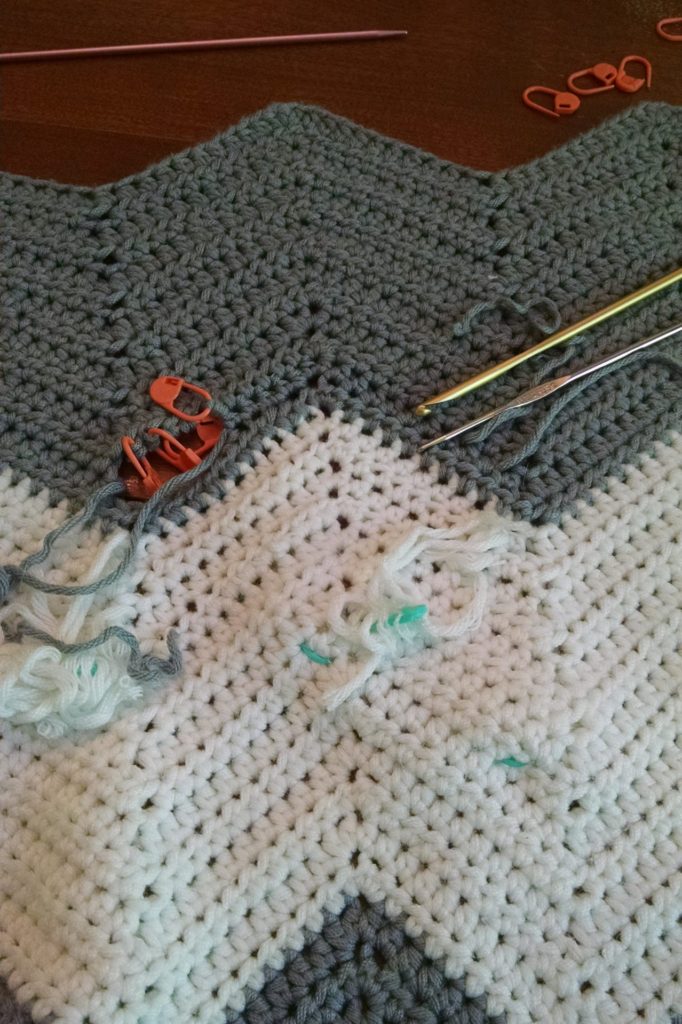
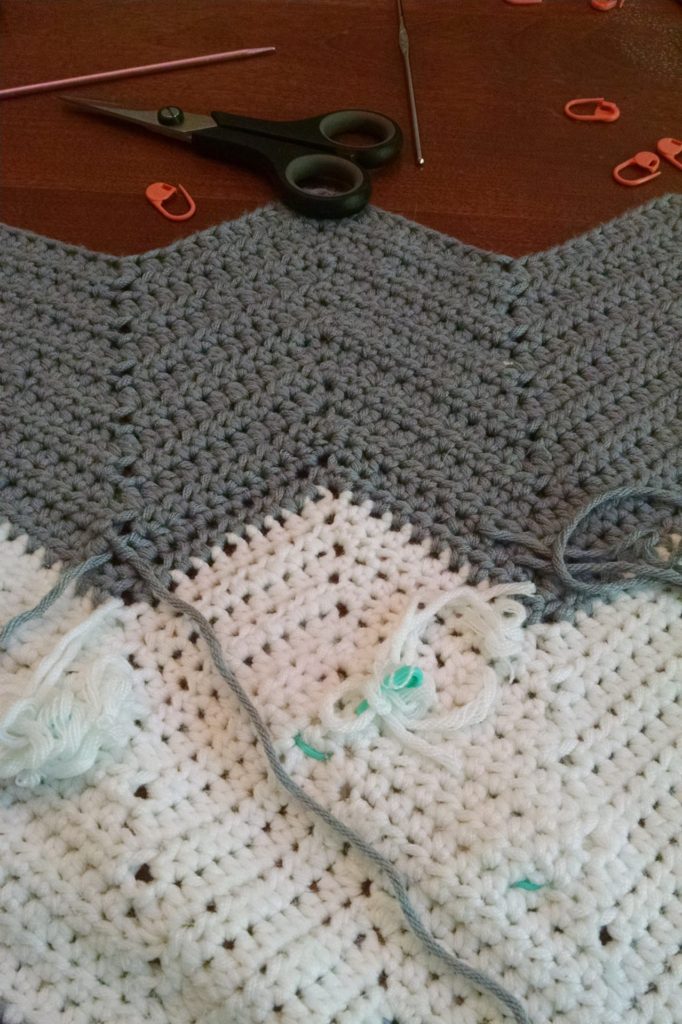
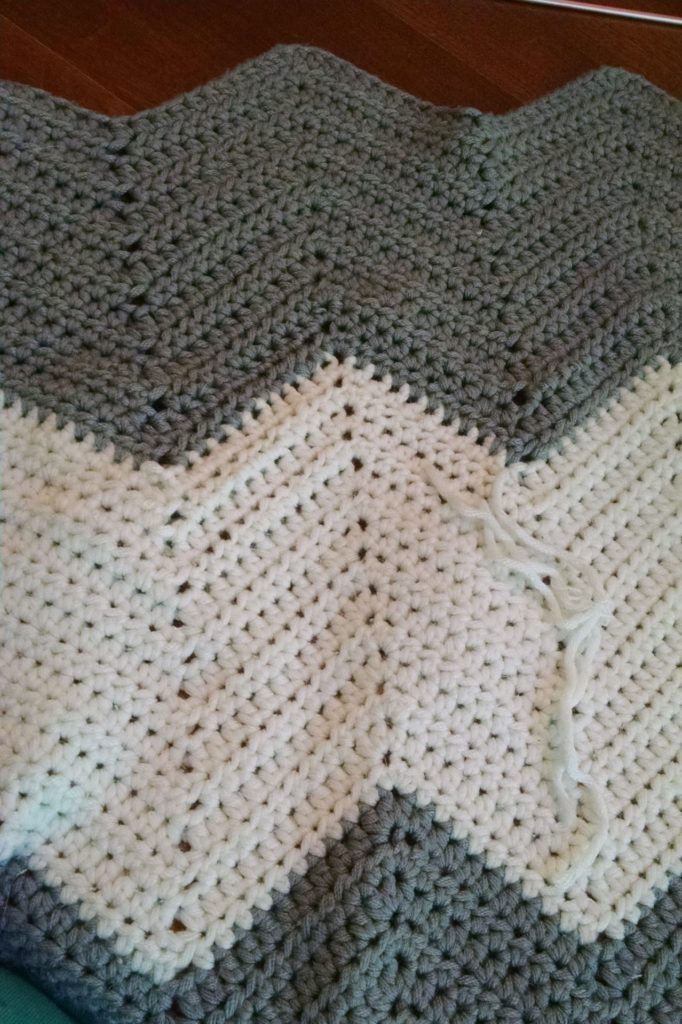
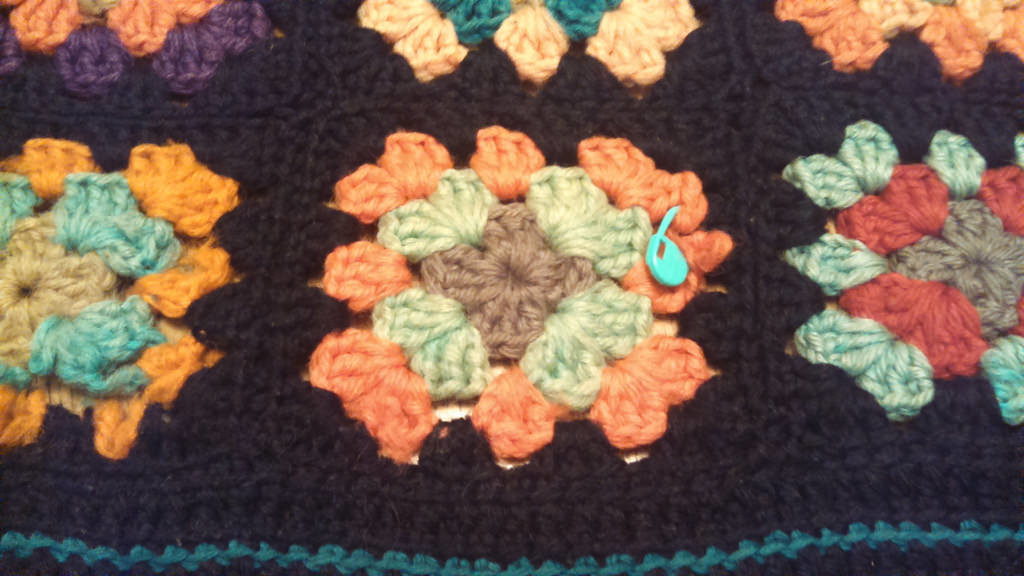
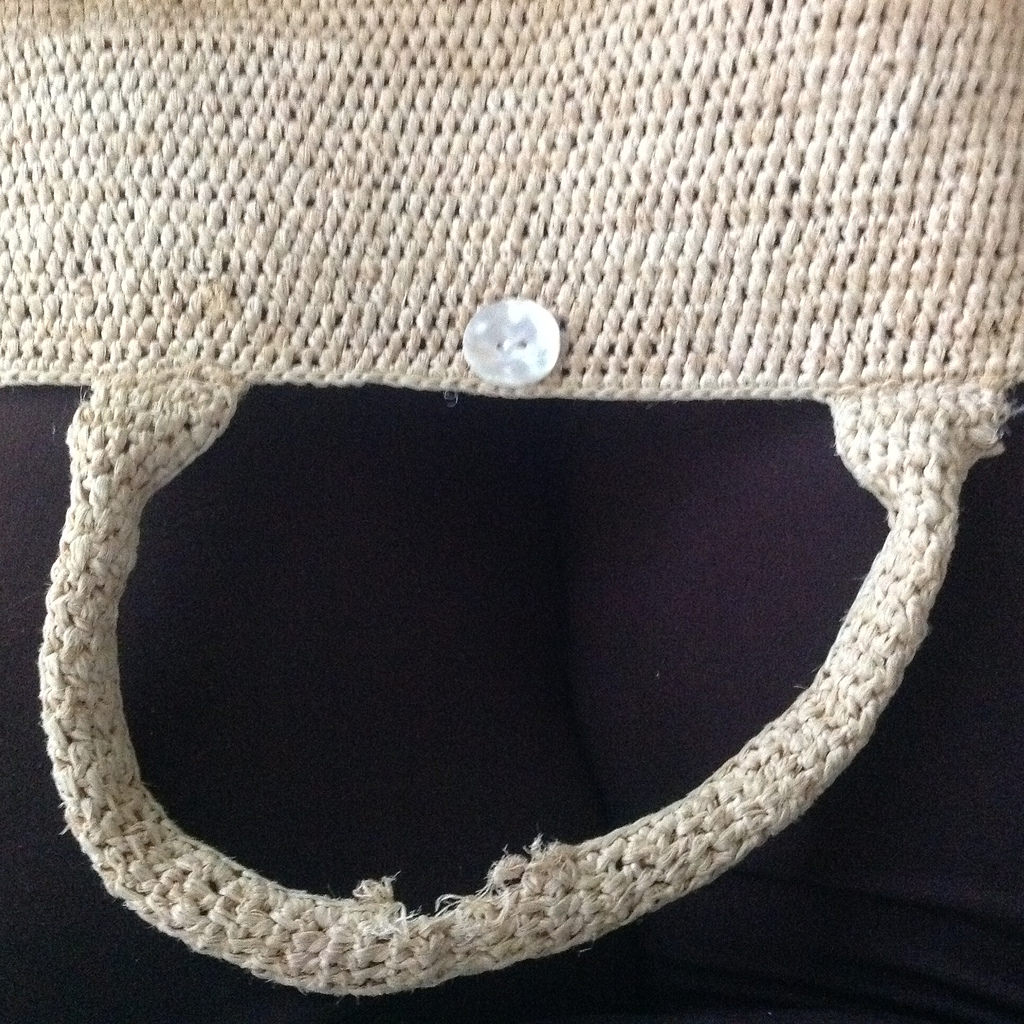 Meanwhile, I’m also looking at the practical part of the project. How damaged is the item? How widespread is the wear? Would attempting to fix the item hurt things further? When I’m looking into this I’m often learning about the history of the item: if it was stored in a place where a lot of sunlight, heat or humidity could get to it, the fibers may be damaged. Are the places where wear is showing from use – such as worn out fingers on mittens, or a handle on a bag becoming worn, or because of a different factor? Often the answers form the type of repairs I can do – mittens that are going to get further wear over each winter are going to receive different treatment than a Christmas stocking that’s taken out once a year.
Meanwhile, I’m also looking at the practical part of the project. How damaged is the item? How widespread is the wear? Would attempting to fix the item hurt things further? When I’m looking into this I’m often learning about the history of the item: if it was stored in a place where a lot of sunlight, heat or humidity could get to it, the fibers may be damaged. Are the places where wear is showing from use – such as worn out fingers on mittens, or a handle on a bag becoming worn, or because of a different factor? Often the answers form the type of repairs I can do – mittens that are going to get further wear over each winter are going to receive different treatment than a Christmas stocking that’s taken out once a year.